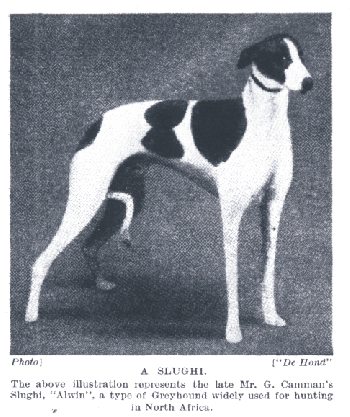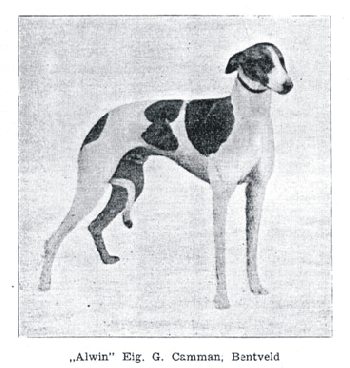

| History
Mistaken Statements about the
North
African Sloughi The North African Sloughi is culturally, genetically, historically and geographically a breed of its own. However,
it is often confused with other breeds, and the statements below have
effectively
undermined the understanding, and therefore the preservation, of this
breed. 1) The Sloughi is the same as the smooth Saluki Quote:"On the Continent the two varieties are regarded as quite distinct, the feathered being termed a Saluki and the smooth a Slughi" Page 42, in "The Saluki in History, Art and Sport", by Hope and David Waters (1969), David & Charles Publishers, Newton Abbot, Devon, United Kingdom Wrong,
the North African Sloughi is always smooth and therefore cannot be a
variety
of a breed which comes in 2 coats, smooth and feathered. If the
Sloughis
were smooth Salukis, some would be carriers for feathering and would
have
feathered puppies, which they don't. 2) The French
imported
Salukis from the Sahara Desert Wrong, French officers imported North African Sloughis, not Salukis. When the first Syrien sighthounds were imported to France in the 1920s, several famous French Cynologists described the clear differences between the North African Sloughi and the Middle Eastern Hounds. 3) from North
Africa to
Afghanistan, all Sighthounds are the same breed Wrong, the
North African Sloughi has been recognized as a separate breed since the
beginning of the FCI, and many years prior to that. Much later, in the
mid 1920's there were 2 standards describing the Saluki and the Persian
Sighthound in France. Later on only the Saluki standard remained. The
Saluki
and the Afghan Hound are separate breeds within the FCI system as well.
The various Tazis are considered to be separate breeds by the people
who
breed them. Germany and the Netherlands have always considered the
North
African Sloughi to be a breed of its own. 4) The Sloughi is the same as the smooth Afghan Hound Two smooth Afghani Sighthounds given as a present by Afghanistan to the French President George Pompidou, named Sloughi in the French press at the time. In the French newspaper France-Soir, 1968.
Wrong,
the North African Sloughi is always smooth and therefore cannot be a
variety
of a breed which comes in 2 coats, smooth and long coated.
5) Sloughis have ridges like Rhodesian Ridgebacks Quote:" As originally depicted in Hutchinson's Dog Encyclopedia, these are the first three Slughis that were imported from North Africa to Holland, two of which had clear ridges like our Ridgeback today." Caption of picture, page 13, in "Rhodesian Ridgeback" by Ann Chamberlain (2000), published by Interpet Publishing, Surrey, United Kingdom.
Wrong, although
Sloughis can have cowlicks on various parts of their bodies, none has
ever
been documented to have a ridge on its back. 6) The Sloughi is particolored  in Hutchinson's Dog Encyclopedia (1935) This mistaken statement was used by Gail Goodman to prove that particolored Sloughis exist, in her quest to prove that Sloughis are Salukis, and was also reproduced in various dog books in english language, including page 13 in "Rhodesian Ridgeback", by Ann Chamberlain (2000).  Original picture from “de Hond” of 1932 Wrong,
these documents identify a top winning Dutch Greyhound at the
time,
named Alwin, owned by Mr.G.Camman, as being a Sloughi.
7) The Sloughi is a newly created breed Quote:"The modern Sloughi, as recognised by the Fédération Cynologique Internationale (FCI) is a newly created breed." page 21, in "Saluki" by Ann Chamberlain (2001), published by Interpet Publishing, Surrey, United Kingdom. Wrong, the
Sloughi is an ancient Sighthound breed endemic to North Africa.
The North African
Sloughi
became popular in Europe for artists and writers, the military and
others
in the early 1800s, and was the source of inspiration for many
masterpieces
of the 19th century. He was presented at shows long before the Middle
Eastern
Salukis and Afghan hounds were known. To know more
about the first
100 years of the breed in the Western World please consult “The
Sloughi 1852-1952” |